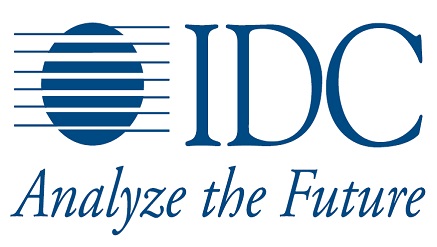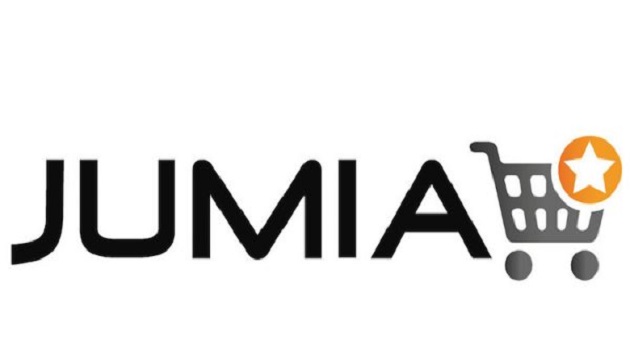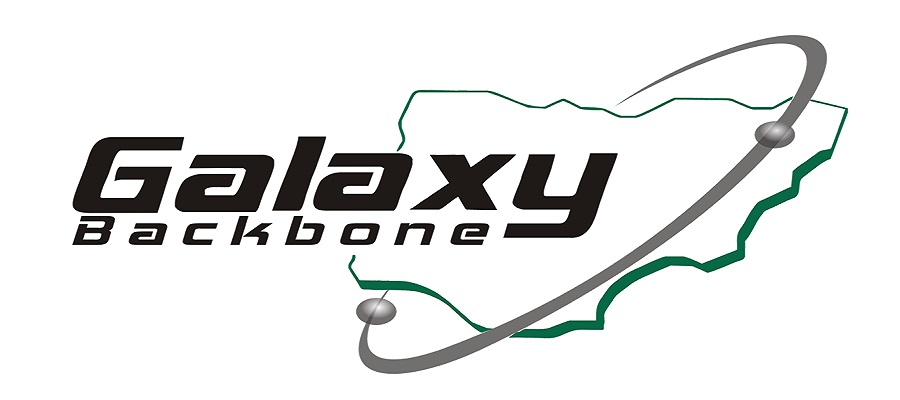E-Business
Lenovo, HP, Others Lost in 2.1% PC Shipment Decline in 2014

Worldwide PC shipments totaled 80.8 million units in the fourth quarter of 2014 (4Q14), a year-on-year decline of -2.4%, according to the International Data Corporation (IDC) Worldwide Quarterly PC Tracker.
Total shipments were slightly above expectations of -4.8% growths, but the market still contracted both year on year and in comparison to the third quarter. Although the holiday quarter saw shipment volume inch above 80 million for the first time in 2014, the final quarter nonetheless marked the end of yet another difficult year – the third consecutive year with overall volumes declining.
On an annual basis, 2014 shipments totaled 308.6 million units, down -2.1% from the prior year.
Although the U.S. and Europe remained stronger than other markets, growth in these mature regions slowed from earlier in the year.
Asia/Pacific (excluding Japan)(APeJ) continued to strengthen, seeing only a very slight increase in volume as a number of public projects and improving consumer demand helped stabilize the market. Similarly, commercial demand, which boosted growth earlier in the year, has slowed while consumer demand is gradually coming back.
Nevertheless, the market progress has been fueled by low-priced systems, including growth of Chromebooks and promotion of Windows 8 + Bing.
Constraints on Bing promotions, such as limits on larger-sized devices, could remove a key market driver while some fourth quarter production was attributed to getting ahead of holiday-related production constraints in Asia in the first quarter, effectively shifting volume from early 2015 into the end of 2014.
“The strength from market leaders, as well as improvement in Asia/Pacific and the consumer market more generally, are positive signs for the PC market,” said Loren Loverde, IDC Vice President, Worldwide PC Tracker. “Growth of Chrome, Bing, all-in-ones, ultraslim, convertibles, and touch systems similarly make PCs more compelling and competitive. Nevertheless, some of the gains are relatively small, and weakening drivers like Bing promotions and end of XP support transitions, cast a shadow of doubt on the strength of the market going into 2015.”
“The U.S. PC market continued to grow in the fourth quarter, outperforming the global market for the tenth consecutive quarter. The past year was supported by Windows XP to 7 migrations in the commercial segment while consumer volume continued to decline,” said Rajani Singh, senior research Analyst, Personal Computing. “Moving forward, the U.S. PC market should see flat to slightly positive growth. The U.S. consumer PC market will finally move to positive growth in 2015, strengthened by the slowdown in the tablet market, vendor and OEM efforts to rejuvenate the PC market, the launch of Window 10, and replacement of older PCs.”
Regional Highlights
United States – Market leader HP had a remarkable quarter with year on year growth jumping to more than 26%.
Other key vendors also had strong performances. As a result, the U.S. PC market concentration has increased to 83% of shipments coming from the top 5 vendors.
Portable PC growth remains strong with double-digit growth from a year ago, while desktop shipments declined by more than -10%.
Europe, Middle East, and Africa (EMEA) – PC shipments in EMEA posted a slight increase in the fourth quarter, fuelled mainly by strong consumer demand during the holiday season.
Vendors continued to stock up ahead of Christmas and January promotional sales, and before the February change to Bing promotions, which will exclude 15 inch notebooks.
This translated into stronger than expected shipments of portable PCs, while desktop PC sell-in remained softer, particularly in the commercial space. Political and economic factors, especially unfavourable exchange rates, also negatively impacted numerous countries across the region.
Japan – The market continued to slump following a surge of XP replacements a year ago. Vendors took the time to clear excess inventory in the channel, leading to a lean quarter. Volume fell below 3 million units in the quarter, a drop of -35% year on year and its lowest level since the fourth quarter of 2006.
Asia/Pacific (excluding Japan) – APeJ continued to stabilize with growth rising to positive territory following several years of significant declines.
HP had a strong recovery from recent quarters, while Dell continued to gain share. Slowing growth in tablets and smartphones as well as promotions of lower-priced Windows 8 + Bing systems helped relieve some pressure on the PC market.
Vendor Highlights
Lenovo continued to push hard in EMEA, expanding channels and capturing consumer holiday demand.
The company also outpaced the market in the U.S. – though by a smaller margin – and was closer to market growth in other regions.
Shipments reached a record 16 million units in 4Q14 with year-on-year growth of 4.9%, and annual shipments up over 10% from last year.
HP also saw a tremendous quarter with 15.9 million units and year on year growth surpassing 15%. A particularly strong quarter in the U.S. was a key driver, along with some volume for public projects in Asia/Pacific and Africa.
Dell shipped over 10.8 million units growing 8.5% on the year, much of it based on a strong performance in notebooks in the U.S. and APeJ. Rising growth in APeJ also helped offset slowing growth in the U.S. and Europe.
Acer grew over 3%, in part due to low volume a year ago but also from the success of its Chromebooks and entry-level notebooks. Acer’s recovery in the U.S. and Europe slowed, in part due to higher year ago numbers.
Apple kept the number 5 position on a worldwide basis, maintaining its lead over ASUS.
The company’s steady growth, along with recent price cuts and improved demand in mature markets, has helped it to consistently outgrow the market.
E-Business
Galaxy Backbone Celebrates the Federal Government’s Paperless Civil Service Milestone

Galaxy Backbone (GBB) aligns with and celebrates the successful announcement by the Office of the Head of the Civil Service of the Federation on the achievement of a Paperless Civil Service, a significant milestone in Nigeria’s public sector reform and digital transformation agenda.

The milestone was formally highlighted at a press briefing led by the Head of the Civil Service of the Federation, Mrs. Didi Esther Walson-Jack, who commended Galaxy Backbone for its sustained support and contribution throughout the implementation of the programme.
GBB has played a critical role in enabling this transition by providing secure, scalable, and shared digital infrastructure that supports the digitisation of government processes across Ministries, Departments and Agencies (MDAs). Through the 1Government Cloud, MDAs have been empowered to migrate from paper-based workflows to digital platforms, improving efficiency, collaboration, data security, and service delivery across the Federal Civil Service.
In addition, GovMail, GBB’s secure government email platform, has strengthened official communication, enhanced records management, and reinforced cybersecurity standards—key pillars in sustaining a paperless operating environment.
Galaxy Backbone acknowledges the collective efforts of the Office of the Head of the Civil Service of the Federation, Permanent Secretaries, Directors of ICT, consultants, partners, and dedicated public servants whose commitment and collaboration ensured the smooth delivery of this initiative.
The Managing Director/Chief Executive Officer of Galaxy Backbone, Prof. Ibrahim Adeyanju, was represented at the press briefing by Akintayo Bamisaye, Acting Group Head, Research, Digital Innovation and Skills Department (RDIS).
GBB describes the achievement as a strong close to 2025 and reaffirms its commitment to supporting the Federal Government in building a modern, efficient, and digitally enabled public service.
E-Business
Jumia CEO says Black Friday Signals Nigeria’s E-Commerce Maturity

At the close of 2025, Temidayo Ojo, the CEO of Jumia Nigeria, reflected on a year-end shopping season that points to the growing maturity of the country’s e-commerce market. “Black Friday is no longer a single, short-lived spike in activity,” he said.

“It has become a familiar, anticipated moment in the retail calendar, where consumers shop deliberately and with confidence.”
Preliminary KPIs for the two months ended November 30, 2025, show strong year-on-year growth in both orders and Gross Merchandise Value (GMV), with GMV growth outpacing order growth. This indicates that customers are placing fuller, more considered baskets rather than shopping in fragmented transactions. Nigeria ranked among Jumia Group’s better-performing markets, with engagement remaining steady throughout the Black Friday period rather than spiking briefly and tapering off.
A key factor behind this performance is the growing familiarity of consumers with online shopping. Customers are increasingly leveraging platform features such as saved carts, brand stores, and price comparison tools to plan purchases in advance. This trend suggests that digital commerce is becoming embedded in everyday habits rather than being viewed as a one-off event.
Ojo also highlighted the role of Jumia’s JForce network in connecting digital commerce to local communities. “Our agents are critical to ensuring that customers across Nigeria, including secondary cities and smaller communities, have access to variety, consistent pricing, and reliable delivery,” he said. “During peak periods like Black Friday, JForce agents can respond faster, serve more customers efficiently, and build stronger local relationships. This isn’t just a distribution channel—it’s a pathway to sustainable income and inclusion.”
Reflecting on the overall performance, the CEO concluded: “What we’re seeing this year-end is steady engagement across categories, stronger consumer confidence, and partners like our JForce agents benefiting from increased activity.
“It confirms that Nigeria’s e-commerce ecosystem is maturing, growing in a more structured and resilient way. As the December Holiday Sale continues, we expect these patterns of familiarity, trust, and participation to sustain momentum and drive both commerce and community impact across the country.”
E-Business
Galaxy Backbone Tops FG’s Website Performance Ranking

Galaxy Backbone Limited (GBB) has been ranked first overall in the 2025 Federal Government Website Performance Scorecard.

This is a landmark achievement for Nigeria’s digital economy.
The ranking, conducted by the Bureau of Public Service Reforms (BPSR), is the definitive benchmark for digital excellence and transparency across all Ministries, Departments, and Agencies (MDAs).
Professor Ibrahim Adepoju Adeyanju, managing director and CEO of Galaxy Backbone, received the award during a ceremony in Abuja.
He described the feat as a validation of the agency’s“Nigeria First”data sovereignty strategy and its relentless pursuit of service excellence.
This recognition comes as the Federal Government intensifies its push to achieve a fully paperless civil service by December 31, 2025.
GBB has been the primary architect of this transition through its 1Gov Enterprise Content Management (ECM) platform, which now hosts the operations of almost all federal MDAs.
The award adds to a growing list of accolades for Galaxy Backbone in 2025, following its recent win of the “International Standard Excellence Award for Best IT Service Provider.”
As the central hub for government shared services, GBB’s performance serves as a blueprint for other agencies currently undergoing digital transformation.
With its expanded fiber-optic backbone now covering over 13 states and its secure cloud solutions, Galaxy Backbone remains the cornerstone of Nigeria’s vision to become a leading digital nation by the end of the decade.

 E-Financial2 days ago
E-Financial2 days agoBanks to Impose N50 Stamp Duty on Transfers of N10,000 and Above from January 1

 E-Financial2 days ago
E-Financial2 days agoFIRS Rebrands as Nigeria Revenue Service, as New Tax Laws Take Effect

 E-Financial2 days ago
E-Financial2 days agoHow Nigeria’s New Tax Law Could Redefine Risk in the Banking Sector

 Broadcasting2 days ago
Broadcasting2 days agoHow to Use the Correlation of Gold with Other Trading Assets in the Forex Market

 E-Business2 days ago
E-Business2 days agoGalaxy Backbone Celebrates the Federal Government’s Paperless Civil Service Milestone

 General News1 day ago
General News1 day agoNigeria Police suspends tinted glass permit enforcement over court injunction

 E-Financial8 hours ago
E-Financial8 hours agoFidelity Bank Appoints Onwughalu as New Chairman After Chike-Obi’s Tenure

 Broadcasting8 hours ago
Broadcasting8 hours agoDStv Offers Instant Package Upgrade for Customers from January to February
























